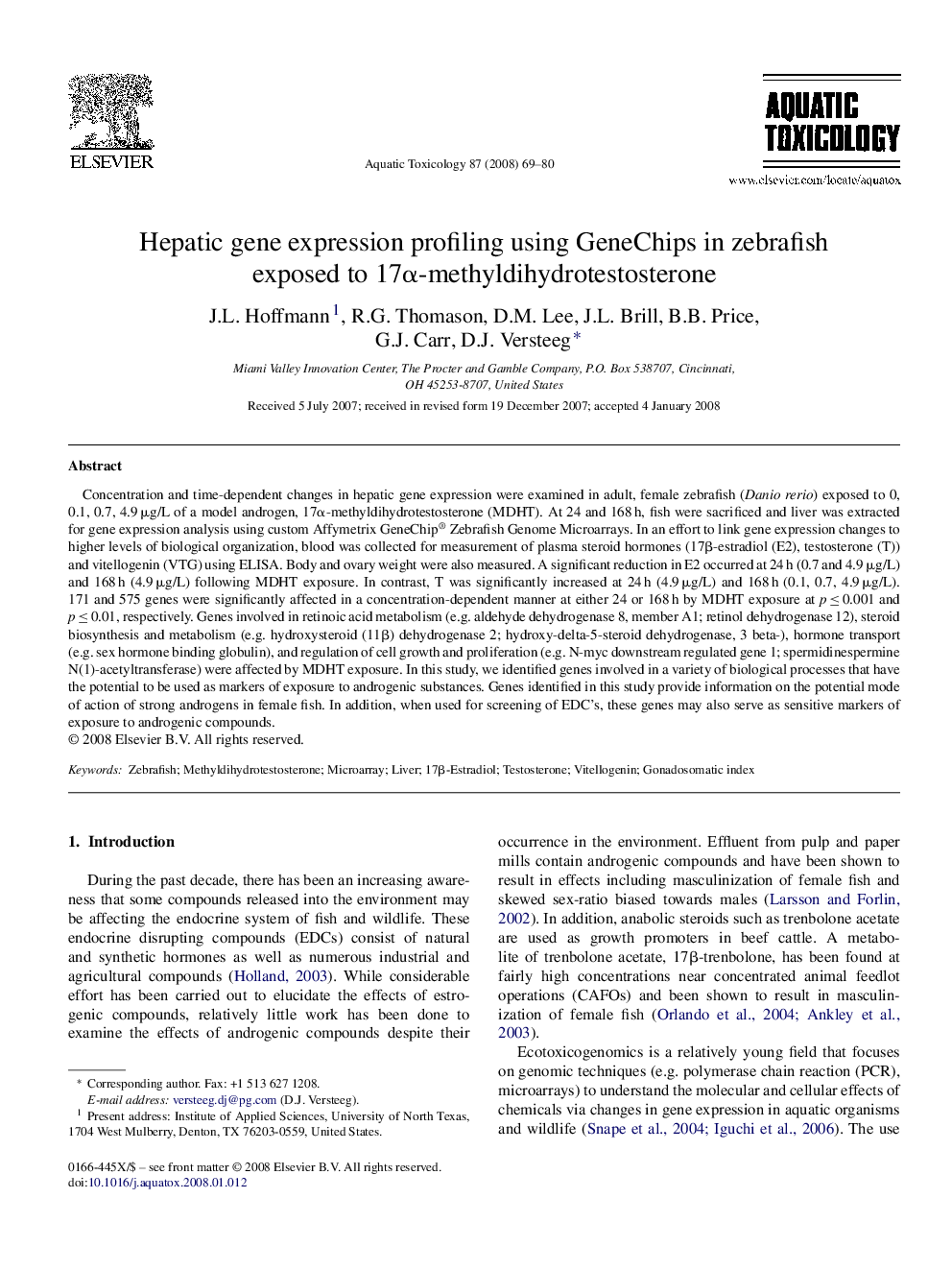| کد مقاله | کد نشریه | سال انتشار | مقاله انگلیسی | نسخه تمام متن |
|---|---|---|---|---|
| 4530802 | 1324731 | 2008 | 12 صفحه PDF | دانلود رایگان |

Concentration and time-dependent changes in hepatic gene expression were examined in adult, female zebrafish (Danio rerio) exposed to 0, 0.1, 0.7, 4.9 μg/L of a model androgen, 17α-methyldihydrotestosterone (MDHT). At 24 and 168 h, fish were sacrificed and liver was extracted for gene expression analysis using custom Affymetrix GeneChip® Zebrafish Genome Microarrays. In an effort to link gene expression changes to higher levels of biological organization, blood was collected for measurement of plasma steroid hormones (17β-estradiol (E2), testosterone (T)) and vitellogenin (VTG) using ELISA. Body and ovary weight were also measured. A significant reduction in E2 occurred at 24 h (0.7 and 4.9 μg/L) and 168 h (4.9 μg/L) following MDHT exposure. In contrast, T was significantly increased at 24 h (4.9 μg/L) and 168 h (0.1, 0.7, 4.9 μg/L). 171 and 575 genes were significantly affected in a concentration-dependent manner at either 24 or 168 h by MDHT exposure at p ≤ 0.001 and p ≤ 0.01, respectively. Genes involved in retinoic acid metabolism (e.g. aldehyde dehydrogenase 8, member A1; retinol dehydrogenase 12), steroid biosynthesis and metabolism (e.g. hydroxysteroid (11β) dehydrogenase 2; hydroxy-delta-5-steroid dehydrogenase, 3 beta-), hormone transport (e.g. sex hormone binding globulin), and regulation of cell growth and proliferation (e.g. N-myc downstream regulated gene 1; spermidinespermine N(1)-acetyltransferase) were affected by MDHT exposure. In this study, we identified genes involved in a variety of biological processes that have the potential to be used as markers of exposure to androgenic substances. Genes identified in this study provide information on the potential mode of action of strong androgens in female fish. In addition, when used for screening of EDC's, these genes may also serve as sensitive markers of exposure to androgenic compounds.
Journal: Aquatic Toxicology - Volume 87, Issue 2, 28 April 2008, Pages 69–80